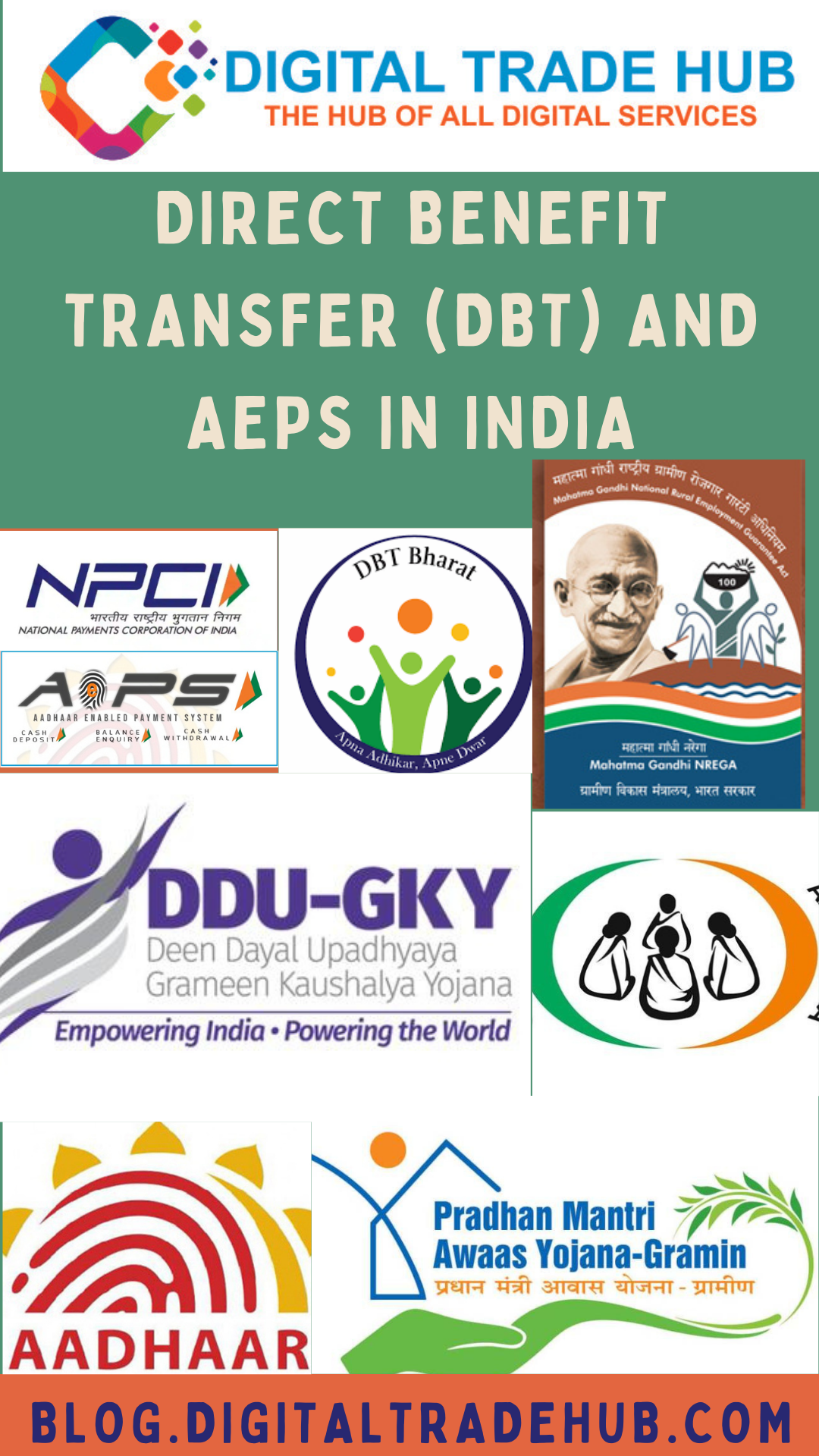Direct Benefit Transfer (DBT) and AEPS in India
The DBT and AEPS (Aadhaar-enabled payment system) is the most used word since 2013 by Indians. Yet, DBT via AEPS has enabled many underprivileged classes, people living under the poverty line, and others to get many benefits of state and central governments welfare scheme payments directly to the bank of needy individuals and seek such benefits instantly. Thus, such welfare scheme-seeking people did not visit government offices or seek the help of middlemen to receive their money. Below-mentioned is some of the welfare schemes which need a DBT account.
- DAY-NRLM
- Deen Dayal Upadhyay Grameen Kaushalya Yojna
- Indira Gandhi National Disability Pension Scheme-IGNDPS
- Indira Gandhi National Old Age Pension Scheme- IGNOAPS
- Indira Gandhi National Widow Pension Scheme-IGNWPS
- Mahatma Gandhi NREGA
- Pradhan Mantri Awas Yojna Grameen
Many of us do not know the LPG subsidy they get is through DBT. Digital India and Make in India campaign in 2015 by Shri Narendra Modi has taken the DBT and AEPS to entire remote villages of India. Thus, today, many of the students, farmers, start-ups, SMEs, and others are getting DBT to form various government welfare schemes payment online to their DBT account linked to AEPS.
Before the Inclusion of DBT in India
Before 2013, the young to older people had to visit many government offices to seek a fund from a welfare scheme. Most of the time, they will get a reply such that no funds have been received at their hand. The poor people in-between give small bribes to know their fund status. Here, the 3rd party agents take bribes. Secondly, the government officials rotate these funds by not giving them to eligible people. Such corruption does not come to light as the poor people are seekers of such welfare funds.
Since the announcement of the Digital India campaign, the AEPS has become popular. The government bodies do implement it in their accounting and payment transfer system. Thus, they are able to do DBT transactions for those whose applications on various welfare schemes are approved. Thus, the DBT happens to the beneficiary account directly from the respective body account. Thus, the time to send and receive via cash to respective branches of the government bodies and dispersal time is avoided by the DBT system.
How to link DBT to your existing bank account?
The DBT benefit seekers must link their Aadhaar card to their bank account to get such benefits. Yet, since 2015, linking of Aadhaar number to a bank account has been mandatory. Today, whoever has opened a bank account with their Aadhaar card is entitled to receive DBT benefits from government welfare schemes. Such people must give their bank account number while applying for any scheme they are willing to get financial help from the Government.
People who have not submitted their Aadhaar number must visit their bank and complete their KYC. Next, you have to visit the branch after a week to link your account to the DBT facility. Your bank will give the form which you have to fill and submit to link your account with DBT facilities.
People who have opened a bank account with an Aadhaar card as one of the KYC documents must check their bank account is linked to DBT. You can check this by visiting the UIDAI website. If your bank account is not linked to the DBT facility, inquire with your branch to add your account by submitting an Aadhaar card and application form to link. Normally, your branch bank does it within 24-hours from the receipt of your DBT link request form.
People who have a bank account in the Pradhanmantri Jan Dhan Yojana scheme must check the same with their branch. If your bank account is not linked, you have to ask them to link by signing up the necessary form and checking later.
Thus, Direct Benefit Transfer (DBT) and AEPS reduced the time, middlemen, and tension in getting paid directly to their bank without visiting government offices. Today, Make in India, dreams for the start-ups and others have come true by including DBT in their account and receiving various welfare schemes benefits. The farmers, students, older adults, and disabled people benefit much from DBT and Aeps transfer.
Direct Benefit Transfer (DBT) and AEPS in India is playing a major role for needy people of India to receive govt funds directly to bank account.
